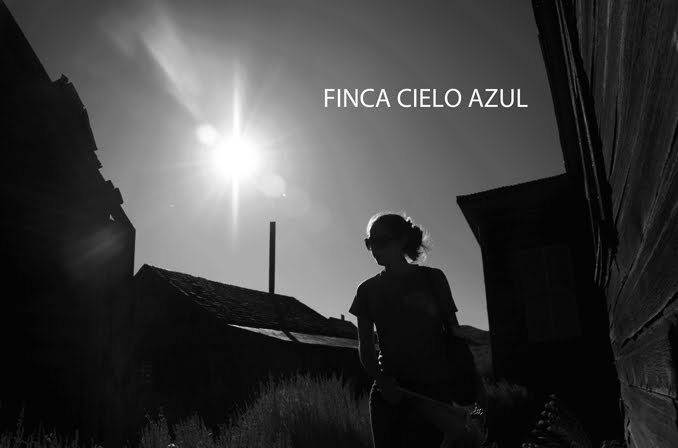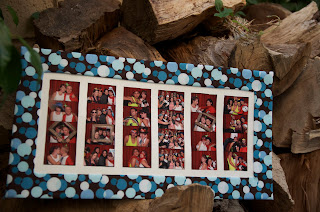I’ve driven by it dozens of times, either on my way to PLC when I volunteered there throughout law school, or now on sporadic trips to the Central Justice Center for court hearings. I had a vague idea about what they did, but based on the name alone I knew it had to be pretty awesome. I kept putting it off though, until they were featured by FLOC last month. I figured, it’s a sign! So, a day late, here's a little write up of what I found out.
In Spanish, a “taller” is a workshop, “a place to build and repair things.” And San Jose is Spanish for Saint Joseph, who’s the patron saint of workers.
Now that we’ve got the lingo down, let’s get down the business. What does Taller San Jose (“TSJ”) do? Simple: it walks young people in Orange County out of poverty. How do they do this? It’s actually not-so-simple.
In the words of TSJ’s Executive Director, Shawna Smith, one of the main jobs of the staff of TSJ is to fan what little hope these young individuals have when they walk through the lobby of the quaint Santa Ana location. In a short amount of time, these young individuals know that people care for them, that people mean it when they say “I care about you and your success,” that someone has their back. Many of these individuals come to TSJ with troubled pasts, difficult financial situations at home, and who knows what else. Letting them know that their goals are important, that they are a person with dignity, and that their life is important, is not easy. Most of us take these things for granted: I have a mother who made these things clear to me, and I grew up in an environment that led me to believe I could be anything I wanted to be. This is not the situation for many of the participants of the programs at TSJ.
“You mean I’m worth more than a minimum wage job? Woah.”
During my tour of their offsite facility where construction classes are held, I had an opportunity to hear from Scott, who has become a leader in his classroom, and has maintained perfect attendance throughout his program: “I feel like I can do something now, I can go out and get a job. If it wasn’t for this program, I’d probably still be doing drugs.” That’s an amazing and powerful statement for this organization, and only one of over 4,500 people that this organization has served since it opened its doors in 1995. I’m sure this is what Shawna noticed when she joined TSJ back in 1997, and her future career as a teacher went out the window: “I just felt called to serve.”

Back when Shawna first joined TSJ, it looked a little different than it does today. The program was centered around a high school completion program, with a carpentry program that taught students how to make benches, custom cabinetry and entertainment centers. Around 2005, TSJ realized there was a better way to help create long term success for it’s students: it began to emphasize more on job placement, and a little less on high school completion programs. Why? “For a young person who has an economic need, they don’t have four years to commit to just sitting in a high school classroom.” So they started to focus more on job training and job placement, while still helping their students complete high school if they hadn’t completed it yet.
This shift, however, had a huge impact on who they could serve: “Before, we had a much greater tolerance for serving kids without papers. When we switched to the workforce, we had to ask for papers. This was a huge ideological shift, one that we still struggle with: these kids look the same, they talk the same, they go to the same schools. But we can’t broker employment if we know they’re undocumented, and their opportunities for advancement [within our program] are so limited: we don’t want to set them up with unrealistic expectations, that just tears a person down.”


Although TSJ had to turn away some who are just as needy as others, it’s done a fantastic job of perfecting a program to ensure that those it does serve, are served well. For example, recognizing that most of their students can’t go to classes and miss an opportunity to earn money to cover expenses at home, TSJ students earn a $100 weekly stipend, and TSJ provides vouchers for transportation and child care.
TSJ operates through three different academies:
- Medical Careers Academy: training for administrative office and entry-level clinical positions in healthcare
- Office Careers Academy: training for administrative positions
- Taller Tech Construction Academy: training for the construction industry
Of these, Shawna admits that the construction academy is usually the most appealing, or “sexy” to people; it’s harder to look at the office programs and realize what’s going on: there is a level of sophistication involved in a working environment and being in a professional setting.
Regardless of the Academy that each individual goes into, TSJ is doing much more than just providing an academic training. TSJ has set 7 goals for each student:
- Obtain a GED or high school diploma
- Master basic computer skills
- Open and use a bank account
- Obtain a driver’s license
- Register to vote
- Remain crime and drug free
- Obtain a job at better than minimum wage
The last one is probably the most challenging in our economic times, and one that I found really interesting. There is a difference between a minimum wage, and a living wage. In California, the minimum wage is $8.00 an hour, but the living wage in Orange County is more like $16.00 (California Budget Project, 2010). I love that this program focuses not on the minimum allowed by regulations, but on the reality of the financial needs of individuals in the specific geographic location they live in.

Given the financial downturn, TSJ has made a few adjustments to help their students and alumni find and maintain jobs. For one, they have created jobs themselves through the Hope Builders program. For another, they are creating new programs in areas where there is a new need. For example, within the construction program TSJ has started to offer a 40 hour training on solar panels, recognizing a field that may have increased need in the future. Seeing growth in the medical industry, TSJ is also implementing new programs in the medical academy, such as billing and coding.

Another change has been to make the program more of a 2-year program than a 16-week program: rather than classes to provide a specific skill set in an area, TSJ offers courses on writing resumes, mock interviews, job coaching, personal development workshops on financial literacy, healthy relationships, etc. TSJ checks in with each student at specific intervals throughout the 2-year program, to make sure the student is still on track, and working towards completing the 7 goals listed above.
The hope is that these changes will allow their graduates to find a job, and help them keep it.
The results of TSJ’s holistic approach are pretty amazing. 70% of students remain employed one year after graduation. And, my favorite statistic, only 8% of students with a criminal background are re-arrested (meaning that 92% of students do not reoffend). In California, the rate of recidivism is around 70%. Pretty cool, right?
Shawna originally switched from the original non-profit she was working with to TSJ because she wanted to work in an organization that was effectuating change. Based on the programs she’s helped start, and the effect they’re having on the lives of hundreds of individuals, I’d say her and TSJ are doing pretty well!
Hopefully you’ve stuck around long enough to get to my favorite part: how you can get involved!
- Volunteer to conduct mock interviews and job readiness preparation with TSJ students. Although they’d understandably prefer that you be employed if you want to volunteer in this area, you don’t need any particular education or experience to do this. As long as you can provide meaningful feedback to the students, you’re in! Come once a month, or once a year, it’s up to you.
- Facilitate workshops for students: if you have experience regarding safety in the workplace, customer service, etc., come talk to TSJ students about it!
- Join a committee! TSJ has committees for special events, program development, etc.
- Financial donations, of course, are always welcome. Like any other non profit, although the work they do is incredible, it’s still a business that requires money to keep it going.
- Tell others about TSJ. Shawna mentioned this has been the key to staying afloat since the inception of TSJ. Especially in Orange County, it’s easy for people to go to work, come home, park in the garage, turn on the TV, and never know about the level of financial need that people within Orange County have. So, go out there and tell them :)
An immense thank you shout out to Shawna, who dedicated more time than I’m sure she had available to entertain my questions, to Liana for coordinating my tour through their facilities and putting me in contact with Shawna, and to my tour guide, who provided so much helpful information.






















